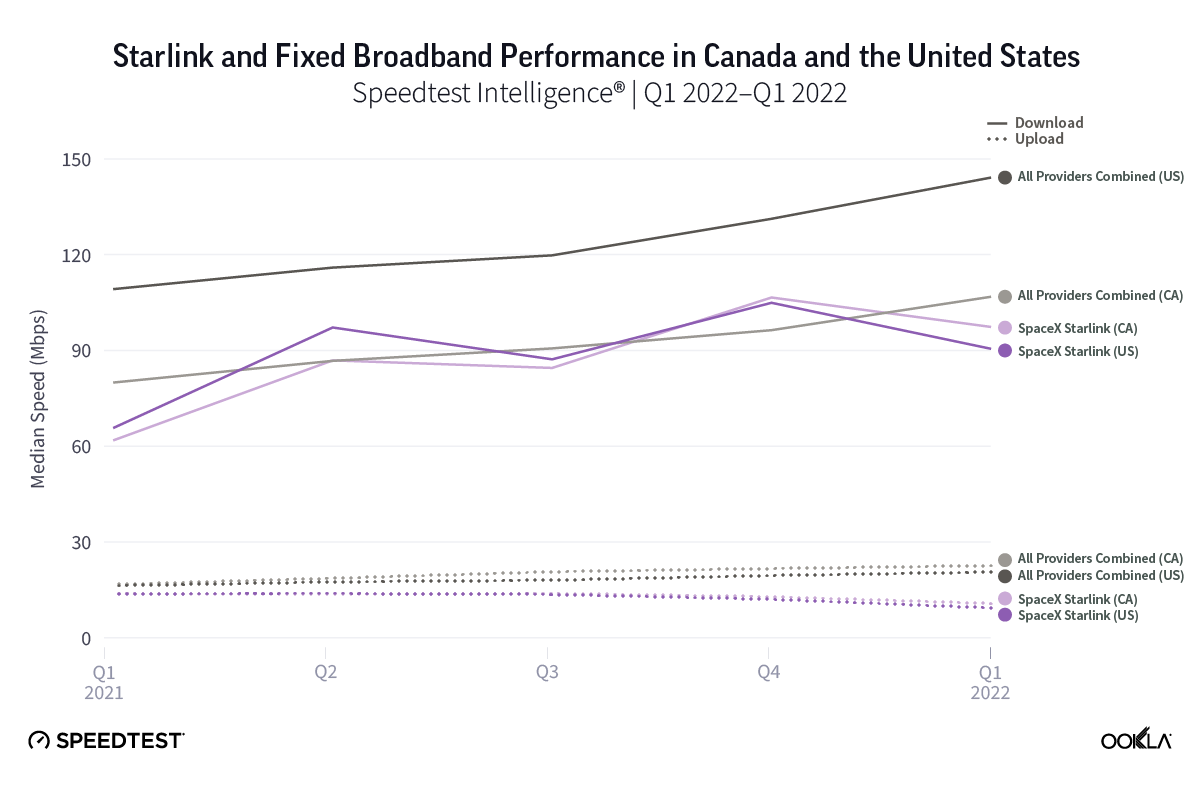
If nothing else, it seems like Elon Musk’s satellite internet service is at least usable.
That’s one conclusion you can draw from Ookla’s latest Speedtest report measuring the first full year of Starlink service after its beta launch in late 2020. From the first quarter of 2021 through the first quarter of 2022, Starlink’s median download speed in the United States jumped a hefty 38 percent, from 65Mbps (Megabits per second) to 90Mbps. Interestingly, the latest number is actually a bit slower than the last quarterly report from fall and winter 2021, in which Starlink came in with a median speed of 104Mbps in the U.S.
(Note: Ookla and Mashable are both owned by the same parent company, Ziff Davis)

Credit: Ookla
Another minor oddity is that median upload speeds (a less important metric measuring how quickly your devices send data to the network) decreased from 16Mbps to 9Mbps over the past year. Unless you’re using Starlink internet to stream to Twitch (a terrible idea), that probably doesn’t affect you that much.
For reference, Ookla’s latest data shows a median download speed of 152Mbps for fixed broadband in the U.S. In other words, Starlink’s satellite internet speeds are getting noticeably faster, but they still lag behind traditional home internet services by a significant amount.
It also doesn’t help matters that Starlink recently got a price hike, now sitting at an initial investment of $600 just to get the equipment to make it work. There’s also a $110 monthly bill, which to be fair is not that far off from residential internet in New York City. It’s reasonable that it would cost money to bring relatively fast internet to remote areas via satellite, but still, that’s a big pile of cash to plunk down on internet.
Still, at least Elon Musk can say one thing with his name attached is actually delivering the goods (and not drama).






